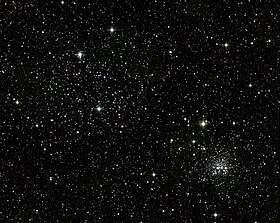M35 | NGC 2168 | Open Cluster | Gemini | 3,000 Light Years Away
Our Best Image

Messier 35 is an open star cluster located in the constellation Gemini, discovered by the French astronomer Philippe Loys de Chéseaux in 1745–46 and later independently rediscovered by John Bevis in 1750. It was subsequently added to Charles Messier’s catalog in 1764. Positioned about 2,800 light-years away from Earth, this open cluster is part of the Milky Way galaxy. Messier 35 is relatively young, with an estimated age of around 100 million years, and it spans a region of about 24 light-years in diameter.
Composed of over 200 stars, Messier 35 displays a variety of colors, reflecting the diverse temperatures and compositions of its stellar members. The stars within this open cluster are gravitationally bound, forming from the same molecular cloud of gas and dust. Messier 35 is a prominent and easily observable target for amateur astronomers, particularly in binoculars or small telescopes. Its location in the Gemini constellation adds to its visibility during the winter months in the Northern Hemisphere.
Observations of Messier 35 contribute to our understanding of open star clusters, offering insights into the dynamics of stellar systems and the processes involved in the formation and evolution of stars within our galaxy. The study of such stellar groupings aids astronomers in unraveling the complexities of star birth and the interactions between stars in shared cosmic environments. Messier 35, with its youthful stellar population and visually appealing arrangement, adds to the ongoing narrative of star birth and evolution within the intricate tapestry of the cosmos.

